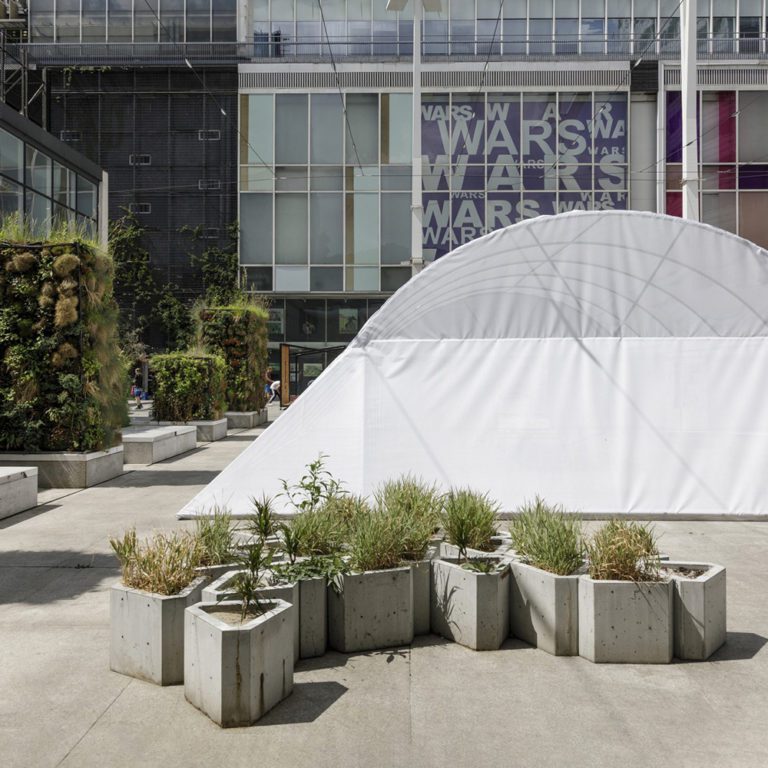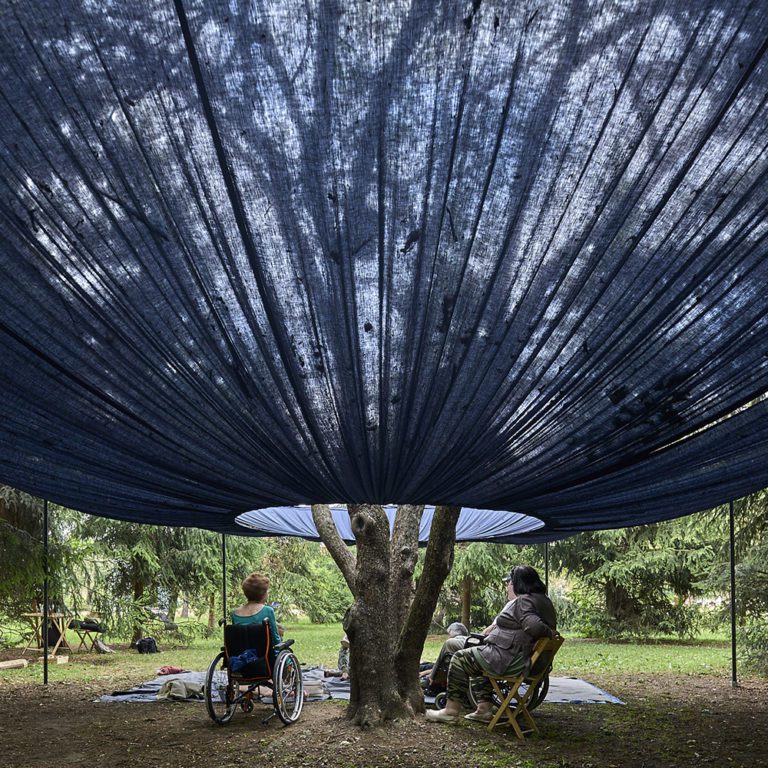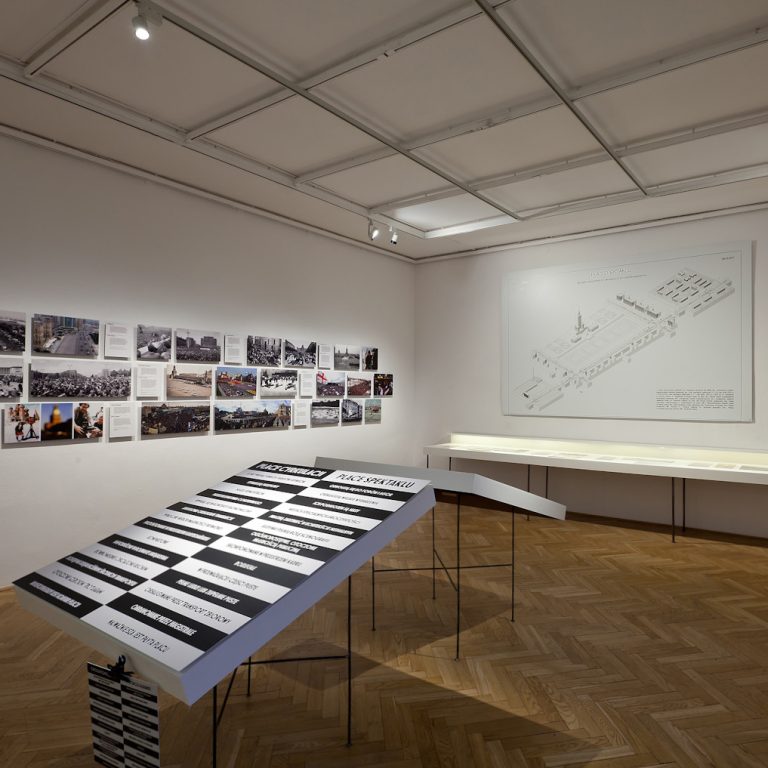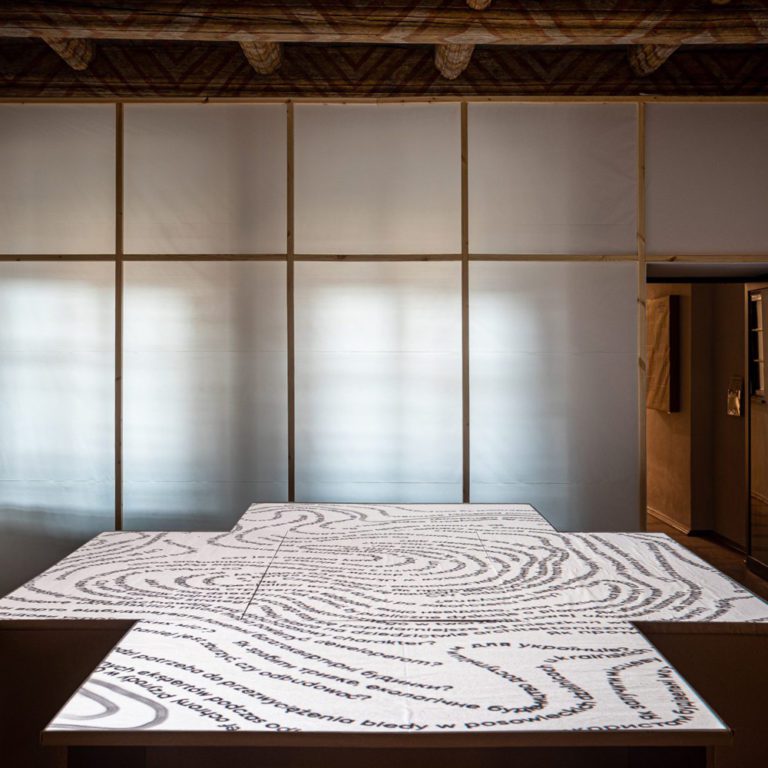
Will there be war tomorrow?
exhibition design:
Tomasz Świetlik, assistant: Michał Kulesza
exhibition graphic design:
Maciek Chodziński, Katarzyna Łygońska
\
curator: Szymon Maliborski
production: Aleksandra Nasiorowska, Julia Kern-Protassewicz
Tomasz Świetlik, assistant: Michał Kulesza
exhibition graphic design:
Maciek Chodziński, Katarzyna Łygońska
\
curator: Szymon Maliborski
production: Aleksandra Nasiorowska, Julia Kern-Protassewicz
client: Museum of Modern Art in Warsaw
04 – 07.07.2018
Open’er Festival, Poland, Gdynia-Kosakowo Airport
3D walk
04 – 07.07.2018
Open’er Festival, Poland, Gdynia-Kosakowo Airport
3D walk
The Polish as a political community – who are they? When and why was the modern nation conceived, and could something have been done differently? In the context of Poland's century of independence, the exhibition Will There Be War Tomorrow? encapsulates wartime premonitions and concerns while also harking back to the military tradition and the symbols of armed struggle. It delves into proposals for socio-political revolution surrounding the Kościuszko Insurrection, "peasant" social narratives, and the play with the canon of political imagination founded on the visions of social leaders and political figures.
Each day, the exhibition space transformed into a stage for theatrical performances, addressing the most contemporary political themes. Meanwhile, the external space around the Museum hall served as a "dance arena" set up for art commandos clad in uniforms with the "antymoro" pattern designed by Jerzy Szumczyk. These art commandos engaged exhibition visitors in their actions.
The architecture of the exhibition comprises multiple spaces. Inside the hall at the Gdynia airport, artistic works are shown in the constellation-like arrangement stemming from intricate networks of relationships that connect them. The viewer navigates through a labyrinth, continually discovering new meanings and connections.
Half of the exhibition is situated on raw ground. Here, a stage and seating for theatrical performances can be found, constructed from scattered elements of Andreas Angelidakis' artistic installation, Demos. The earth within the exhibition space complements the more abstract nature of the content and reminds visitors of the reality of the discussed topics and their material consequences. At the entrance to the hall, a mural by Jadwiga Sawicka captures the eye from a distance. Encouragement to interact with the exhibition also comes from the obstacles patterned with "antymoro" camouflage and placed in front of the hall – obstacles that intrigue, amuse, and thus demystify the military aesthetics.


